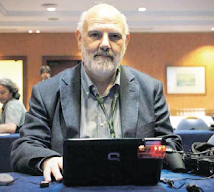
If we strip out the monthly year on year increase in the consumer price index, however, things look a little different, and we no longer have the impression of steady acceleration, but rather it seems the rate of increased peaked - at least for the time being - in December.

Consumer-price inflation accelerated to 8.7 percent in February, underscoring the risk the world's fourth-largest economy will overheat after expanding 11.2 percent in the fourth quarter. Producer prices, the cost of goods as they leave the factory, rose 6.6 percent in February, the fastest pace in three years.
Jewelry sales rose 47 percent from a year earlier, grain and cooking oil climbed 41 percent, and petroleum jumped 40 percent. Furniture gained 26 percent, while automobiles surged 34 percent.
To foster domestic consumption, China is raising welfare payments and subsidizing farmers' purchases of televisions and refrigerators. Urban disposable incomes climbed to 13,786 yuan ($1,900) last year, while rural earnings rose 15.4 percent to 4,140 yuan.
Monetary policy is still incredibly loose in China with thre real interest rate being in negative territory (the real rate is the rate of interest after allowing for inflation. The key one-year deposit rate is 4.14 percent, less than half the current rate of inflation.











No comments:
Post a Comment